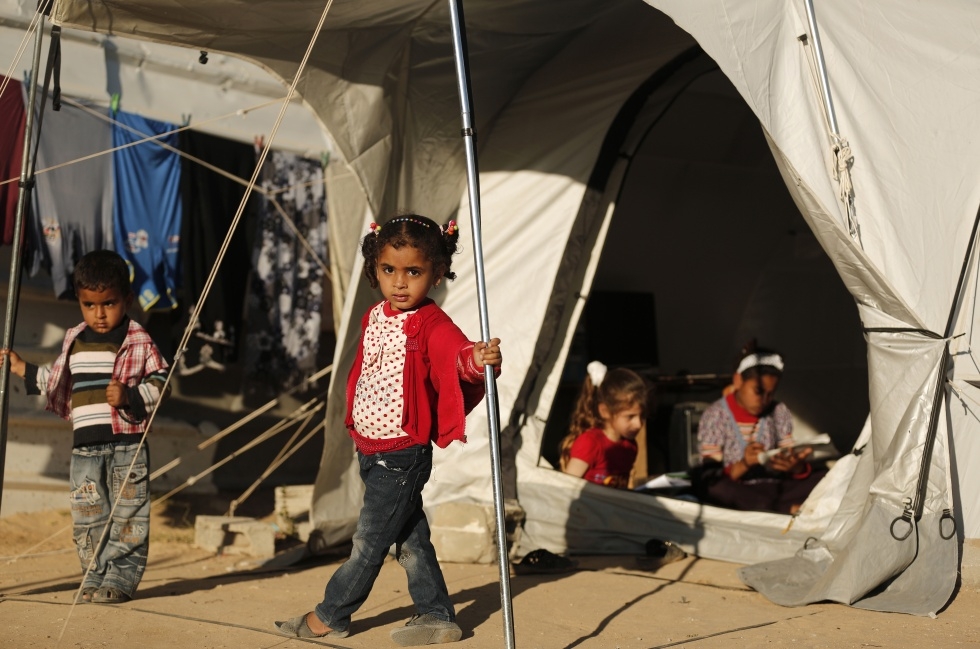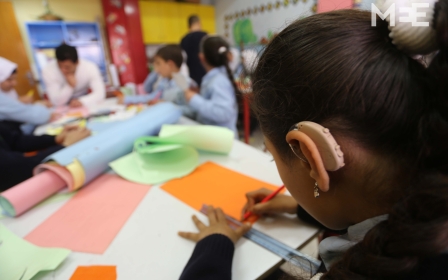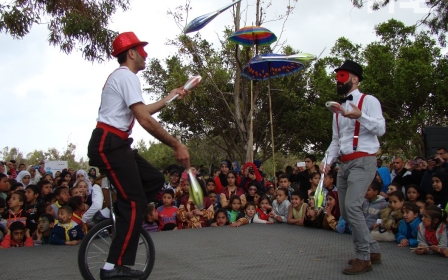Gaza: Children in crisis

Mona Samouni was 10-years-old when she lost her home, her parents and 19 other relatives, after they were crushed before her eyes in one of the bombing raids of Israel’s Operation Cast Lead in 2009. In an award-winning film, she speaks of her past experiences with an almost eerie detachment, as if she is telling someone else’s story.
One can only guess at what is going on behind that calm facade, as she sends a heartbreaking message to other, luckier children: “I ask the children of the world to take good care of their mothers and fathers... People don’t appreciate the blessings they have till they lose them.”
For years after that shattering event, Mona obsessively drew and redrew the images that haunted her - “a sea of blood and body parts”. She suffered recurring nightmares, fits of anger and lack of concentration at school. But thanks to a loving family environment and intensive therapy, she seems to be gradually recovering.
'Continuous PTSD'
Of the 900,000 children in Gaza, UNICEF reckons 373,000 are in need of “psycho-social first aid”.
The Gaza Community Mental Health Programme (GCMHP), which runs three psychiatric clinics in Gaza treating both children and adults, struggles to cope. Psychiatrist Yasser Abu Jamei, who heads the GCMHP and who himself lost many members of his extended family in last summer’s onslaught, said: “There was no place for parents and children to hide... You never knew where the bombs were going fall.”
According to Dr Abu Jamei, the most common symptoms among children are anxiety and fear. They are afraid of being separated from their parents, have frequent nightmares and often develop a stammer. Schools report higher levels of aggression and low school achievement for many children. An important part of GCMHP’s work is training both teachers and parents on how to deal with the aggression.
Of the situation in Gaza, Dr Abu Jamei jokes: “This is a form of continuous post traumatic stress disorder (PTSD)" - or, as I like to say, it can’t be "post-traumatic stress disorder" if it is not yet "post". Because, beyond the daily privations of life in Gaza - the desperately overcrowded housing conditions, inadequate food, a contaminated water supply, badly damaged schools - the wider context is one of ongoing, unpredictable attacks.
Understanding Israel’s strategy
The film in which Mona Samouni appears, Where Should The Birds Fly, gives the lie to Israel’s claim that its assaults on Gaza are purely retaliatory: we see the harassment of farmers attempting to harvest their crops and of fishermen trying to earn a living in the polluted stretch of sea where they are supposedly allowed to put down their nets. But for the presence of international observers, the casualties from such attacks would undoubtedly be much higher.
In seeking to understand Israel’s seemingly random brutal actions, we should remember a key slogan in Bill Clinton’s election campaign: “It’s the economy, stupid!”
An Israeli-made film, The Lab, lifts the lid on the Israeli arms industry - a multi-billion dollar a year earner and the backbone of Israel’s economy. As the title indicates, Gaza is the place where the effectiveness of Israel’s super-sophisticated weaponry and new military strategies can be evaluated and demonstrated to the world.
Israeli industry minister Benjamin Ben Eliezer explains in the film how Israel has an edge over its competitors in the field: “People like to buy things that have been tested. If Israel sells weapons, they have been tested, tried out.”
Even more chillingly, Amiram Levin, former general and now an arms dealer, explains to a rapt audience the role of the Palestinian people: “You have to understand, most of these people [in Gaza] were born to die - we just have to help them.”
Israel has certainly been launching increasingly violent attacks on Gaza every couple of years since 2008, and arms sales have been soaring. Does this mean that the people of Gaza can expect a fresh all-out assault every time the Israeli arms industry needs a boost, irrespective of international conventions on the rights of civilians?
The recent report by the Israeli military whistleblower organisation Breaking the Silence, confirms that the Israeli army is now in open contempt of the accepted rules of armed conflict: last summer soldiers were told to shoot and shell anything within range - the range of a tank being two kilometres. Those who questioned these orders were told: “There are no innocent civilians.” No wonder the dead in the last onslaught were very largely civilians, including 537 children.
An uncertain future
But what if Palestinian children, both in Gaza and in the West Bank, were also unwitting subjects in another long-term experiment - one of social and psychological engineering? In the West Bank children may not suffer the traumas of those in Gaza - but when your parents are humiliated by soldiers and attacked by settlers before your eyes and you fear a violent incursion by heavily armed men in the middle of the night, what are the long-term psychological effects?
As Israel’s sophisticated psychologists must know, witnessing and experiencing violence and humiliation while being powerless to resist breeds anger, frustration and the desire for revenge. Is this precisely what Israel wants? Do they hope to produce a generation of disturbed young people, some of whom will be spurred to desperate acts of retaliation? There is a logic to it. Israel relies absolutely on provoking some form of violent response, however ineffective, that it can use to justify its demonstrations of military might and its ongoing expropriation of Palestinian land.
Gazan-British mental health worker Wasseem El Sarraj speaks of the “sustaining rituals” of everyday life in Gaza, which somehow survive: “There is laughter, happiness and beauty amid deep and profound suffering.” The population is fortified by a strong sense of identity, enduring family networks and the knowledge that both international law and natural justice are on their side. But all fear that Gaza’s legendary resilience may be put to the test once more, before long.
- Hilary Wise is a writer, an academic and an activist. She also was editor of Palestine News for eight years.
The views expressed in this article belong to the author and do not necessarily reflect the editorial policy of Middle East Eye.
Photo: Palestinian children, whose houses were destroyed during the 50-day war between Israel and Hamas-led militants in the summer of 2014, stand in their makeshift homes, in the Johar al-Deek neighbourhood close to the border with Israel, in central Gaza City, on 7 May (AFP)
New MEE newsletter: Jerusalem Dispatch
Sign up to get the latest insights and analysis on Israel-Palestine, alongside Turkey Unpacked and other MEE newsletters
Middle East Eye delivers independent and unrivalled coverage and analysis of the Middle East, North Africa and beyond. To learn more about republishing this content and the associated fees, please fill out this form. More about MEE can be found here.





